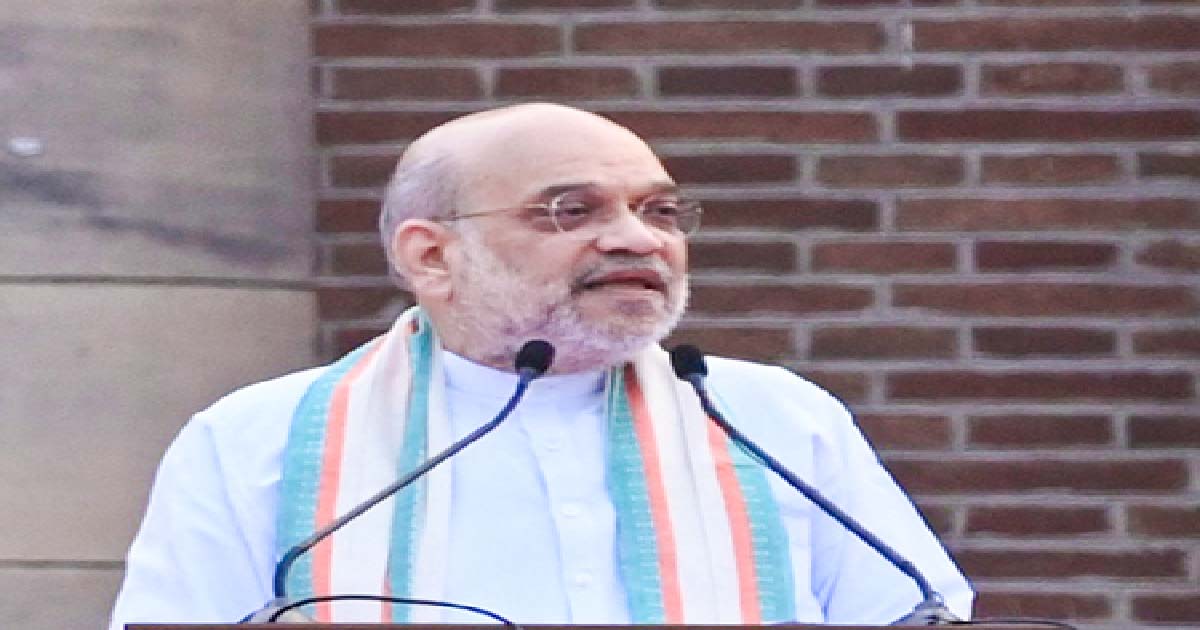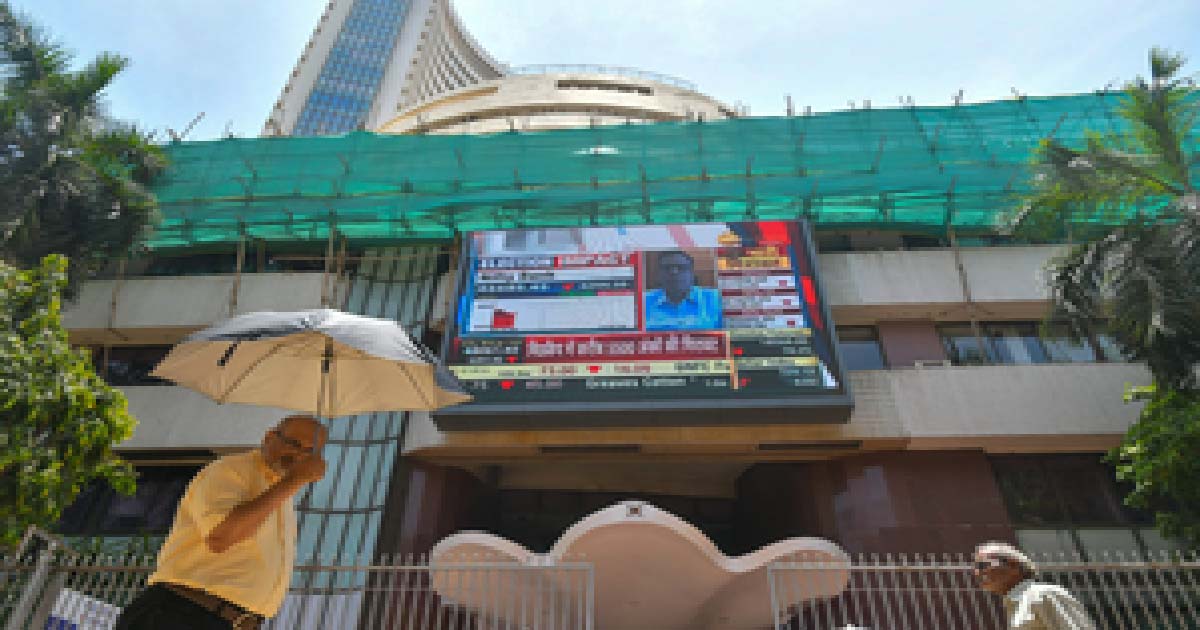Business
How ECHO India is building capacities via AWS Cloud to touch 400 million lives

With a goal to touch 400 million lives in India by end 2025, New Delhi-based non-profit organisation ECHO India is working towards building capacities across areas such as healthcare, education and other sustainable development goals.
ECHO India (Extension for Community Healthcare Outcomes), along with its partners, has launched over 200 hubs and rolled out more than 350 programmes covering more than 30 disease areas, which has led to the capacity building of over 700,000 healthcare providers across the country.
Kartik Dhar, Head Technology & Digital Platforms at ECHO India, told IANS in an interview that Cloud technology is at the heart of all that they do, as it enables them to connect their participants together.
The Covid pandemic created a great sense of urgency for the organisation and access to AWS infrastructure allowed them to build their platform much faster and with greater reliability.
Here are the excerpts from an interview:
Q. What is the vision behind ECHO India?
A: Established in 2008, ECHO India is a non-profit organisation focused on bringing equity primarily in the fields of healthcare and education through capacity building of healthcare practitioners and educators.
We follow the Societal Thinking approach, and are working towards building an open digital infrastructure for capacity building through a community-centred approach, powered by the ECHO’s ‘hub and spoke’ Model of learning; Hub being a group of experts who regularly mentor the learners (spokes).
TeleECHO “clinics” are conducted by ECHO ahubs’ through basic, widely available teleconferencing tools, and the sessions involve primary care clinicians and healthcare workers (HCWs) from multiple sites presenting patient cases to teams of specialists and each other. In this manner, ECHO creates ongoing learning communities to support primary care clinicians and helps them develop necessary skills.
With a goal to touch 400 million lives in India by end of 2025, ECHO India has partnered with the Ministry of Health and Family Welfare (MoHFW), Government of India, State NHMs (National Health Missions), Municipal Corporations, Nursing Councils as well as leading medical institutions across India including AIIMS (All India Institute of Medical Sciences), NIMHANS (National Institute of Mental Health & Neurological Sciences), NITRD (National Institute for Tuberculosis and Respiratory Diseases), NICPR (National Institute of Cancer Prevention & Research), Tata Memorial Hospital, and PGIMER (Post Graduate Institute for Medical Education & Research). ECHO India, along with its partners, has launched over 200 hubs and rolled out 350+ programmes covering more than 30 disease areas, which has led to the capacity building of over 700,000 providers across the country.
Q: What innovations has Echo brought into the non-profit space?
A: The ECHO Model is an innovative learning model that uses case-based learning, guided iterative practice, and tele-mentoring, instead of traditional online and unidirectional learning methodologies like Webinars, Lectures, MOOC (Massive Online Open Courses). Through this practical approach we are able to ensure that health workers have better knowledge retention and practical understanding that they can apply in the field.
We have also developed an innovative Digital Platform called iECHO, — developed in collaboration with Project ECHO USA — that serves as a shared digital infrastructure for the entire global movement. Through this digital platform, participants can connect with experts, take part in live learning sessions, access best practices, get digital certificates, and potentially connect and share knowledge freely and openly.
Q: Tell us about the reach of your work and elaborate on your plans for the next couple of years?
A: We launched more than 80 new hubs during 2021-22, representing a strong YoY growth of over 65 per cent, following on from a massive 160 per cent growth in the year before.
We signed a Memorandum of Understanding (MoU) with the Ministry of Health and Family Welfare to facilitate the use of ECHO Model in MoHFW-linked hospitals, central institutions and national-level programmes.
We also entered into formal partnerships with 25 state NHMs to enable capacity building at primary and secondary care. We expanded outreach to all the North-eastern states, strengthening ECHO’s impact in the country’s hinterland, thus reducing inequities in healthcare access.
In a recent programme, we mentored 5,500 nurses for infection prevention and control in partnership with the Nursing Councils, state NHMs and Municipal Corporations of Mumbai, Nagpur and Kolkata.
We see our role evolving from solving the problem to distributing the ability to solve to our “superhubs”, hubs or sometimes even our participants. Our role is to ensure that in this capacity building and skilling of HCWs, there is fidelity to the ECHO Model, an enabling technology infrastructure, defined standards and proper guidance and support all the participants of the ECHO movement.
iECHO allows hubs to onboard themselves on the ECHO platform faster, helps them build and operate multiple programmes and onboard their spokes too. They can access all the programme data at one place with ways to manage multiple programmes, see details of attendance, get robust data analytics on participation, conduct assessments and issue certification to the participants.
Q: How do you go about addressing Sustainable Development Goals?
A: The ECHO model has proven efficient, effective, and scalable across several disciplines in empowering global change, especially in the fields of health and education. Going beyond health and education, the ECHO model can be leveraged to create lasting change across multiple sectors and achieve Sustainable Development Goals (SDGs) — extending even to Gender Equity and Climate — by empowering stakeholders from relevant fields to think and expand their horizons to achieve a better and more sustainable future for all.
Q. What types of challenges do you face while working and how do you solve them?
A: As a technology enabled non-profit, we are constantly challenged with ensuring our systems are resilient, scalable, and accessible to all. In a resource constrained environment like India, access to fast internet has been challenging, especially as we work in remote areas.
Our goal is to ensure equitable access to all our community participants, and we have taken various initiatives to ensure the ECHO platform is accessible to the last mile.
A constant challenge in software development is the balance of speed and quality. Given that we are trying to solve a massive challenge of touching 1 billion lives, we need to operate at speed, while ensuring that the solutions we develop are robust and scalable to meet the growing needs of the movement.
Q. What are some of the emerging technologies that will further reshape healthcare, education, and livelihood over the next 4-5 years?
A: The upcoming Ayushman Bharat Digital Mission (ABDM) platform by the Ministry of Health & Family Welfare, Government of India, can be a game changer in ensuring equitable access to healthcare for the last mile. By enabling interoperability and digitization, it could potentially transform healthcare in the same way that UPI (Unified Payments Interface) has transformed micropayments in India.
We also are optimistic about the potential of Artificial Intelligence (AI) and Machine Learning (ML) technologies to impact the last mile. We have seen deep learning language models like GPT-3 transform the way humans can interact with computer systems, and we are collaborating with the Societal Platform team towards building platform capabilities that will allow the ECHO community to discover and access knowledge resources seamlessly.
AI-based voice assistant and translation technologies in regional languages of India can also be a game changer towards democratizing access to specialized medical knowledge and expertise to health workers in remote areas who are not comfortable with English.
Q: What has cloud technology and AWS helped you to do that you couldn’t do before?
The ECHO movement is a model which relies on personal touch, mutual respect and connection between the mentor and mentee. The challenge has been not to lose the heart of the model while constructing a digital platform which will enable a huge force-multiplication to the initiative. Cloud technology is now at the heart of all how we propose to expand it exponentially, as it connects our participants together while retaining fidelity to the Model.
Amazon has been a critical part of our journey and a key partner. We are using a whole host of AWS services such as the Elastic Kubernetes Service, Pinpoint for messaging, DynamoDB for a highly scalable NoSQL database, and much more.
The pandemic created a great sense of urgency for us and we needed to develop our platform at rapid speed. Having access to AWS infrastructure has allowed us to build our platform much faster and with greater reliability. This has been critical in the journey of ECHO.
Q. In terms of business outcomes, what benefits have you experienced because of running on AWS?
By leveraging containerization and microservices architecture, specifically through Amazon Elastic Container Registry (ECR) and Amazon CloudWatch, we have improved our infrastructure pipelines dramatically. Through ECR we are able to automate our deployment and ensure we can reliably deploy functionality to our users seamlessly. CloudWatch has given us improved insights into infrastructure telemetry data and has reduced the time for issue resolution significantly.
Amazon Simple Email Service (SES) has provided us with a highly cost effective and scalable solution for sending email communications and notifications to our users. It has provided a low cost and high reliability solution as compared to other vendors.
Having a managed suite of services, especially the database and container registry has allowed us to achieve a lot with a small and lean team.
Not having to hire dedicated Database Administrators or system administrators to manage and maintain the database has allowed us to focus our efforts on maximizing value for our users.
Implementing DynamoDB with auto-scaling and in-memory caching has given us a highly scalable database with zero downtime, while being able to handle millions of requests.
Through our microservice architecture implemented on AWS Cloud we are able to ensure a highly available system with failover protection and auto-scaling to handle high traffic spikes.
Amazon Pinpoint has enabled us to send SMS notifications, One-time passwords (OTP), and other communications very easily, thus allowing our users to easily sign up, get updates, and interact with the ECHO platform using mobile devices.
Having dedicated technical support and communication from our relationship manager has been highly appreciated, and gives us added efficiency, and an extra peace of mind.
Ensuring Cybersecurity and compliance best practices around Identity and Access Management (IAM), separation of development, testing and production environments, while maintaining a highly agile and responsive development workflow has been enabled by AWS.
The “mission” of ECHO India is not to generate revenue. It is to bring equity in Healthcare using this ECHO model. I am very happy that the use of AWS in our digital platform iECHO is enabling us to do that.
Business
India Q2 FY26 earnings exceed expectations led by midcaps: Data

Mumbai, Nov 6: The FY26 earnings season in the second quarter (Q2) exceeded expectations, driven by strong midcap performance, despite some weakness in select smallcap pockets, industry data showed.
Brokerage Motilal Oswal Financial Services reported a 14 per cent year-on-year earnings rise among companies that have declared results so far, broadly in line with expectations.
Large-cap earnings rose 13 per cent, in line with the broader universe, while mid-caps again outperformed expectations with a 26 per cent surge, supported by technology, cement, metals, PSU banks, real estate and non-lending NBFCs.
Smallcaps lagged at 3 per cent growth as private banks, non-lending NBFCs, Technology, Retail and Media weighed on performance. Even so, 69 per cent of small-caps met or beat forecasts, compared with 84 per cent of largecaps and 77 per cent of mid-caps, the data showed.
Sectoral performance analysis showed that oil and gas and cement sectors showed highest sectoral gains as state-run fuel retailers led with a 79 per cent increase in profits, while cement profits surged by 147 per cent.
Along with these sectors, technology profits rose by 8 per cent, capital goods by 17 per cent, and metals by 7 per cent, collectively accounting over 80 per cent of incremental profit growth.
Earnings for 27 Nifty firms that have reported results increased by 5 percent year-on-year, driven by HDFC Bank, TCS, JSW Steel, and Infosys while Coal India, Axis Bank, HUL, Kotak Mahindra Bank and Eternal dragged performance. Seven Nifty constituents fell short of estimates, five exceeded forecasts, and 15 met expectations.
“Earnings upgrades outnumbered downgrades for the first time in several quarters, signalling a healthier market backdrop and improving confidence in India Inc.’s profitability trajectory,” the MOFSL report said.
While headline indices remain range-bound after a muted year, underlying fundamentals are improving — supported by moderating earnings cuts, diversified sectoral leadership, and robust midcap resilience, it added.
Business
HM Amit Shah congratulates Amul, IFFCO for landmark achievement among world cooperatives

New Delhi, Nov 5: It is a testament to the boundless potential of the cooperatives, Union Home Minister and Minister of Cooperation, Amit Shah, congratulated daily giant Amul and Indian Farmers Fertiliser Cooperative Limited (IFFCO) for occupying the first two ranks among the top 10 cooperatives in the world.
In a landmark achievement for India’s cooperative sector, two of India’s leading cooperatives, Amul and IFFCO, have secured the first and second ranks in the global ranking for cooperatives, respectively.
In a post on X social media platform, HM Shah said, “A proud moment for Bharat! Heartiest congratulations to Amul and IFFCO for occupying the first two ranks among the top ten cooperatives in the world”.
“It is an honour to the tireless dedication of millions of women associated with Amul and farmers contributing to the IFFCO. It is also a testament to the boundless potential of the cooperatives, which is being transformed into a global model of empowerment and self-reliance by Prime Minister Narendra Modi,” HM Shah posted.
Meanwhile, the India’s dairy sector is the backbone of rural livelihoods and a symbol of inclusive growth. As the largest milk producer in the world, India has combined farmer-led cooperatives, women’s participation and scientific practices to achieve remarkable progress.
Notably, while safeguarding existing gains, there is continued support to the sector through subsidies, credit facilities, R&D in fodder and animal health, among others, to ensure India’s dairy sector remains resilient, inclusive, and capable of meeting future domestic and international demand.
Moreover, the National Co-operative Exports Limited (NCEL), set up by the Government in 2023, has achieved the impressive milestone of exporting Rs 5,403.01 crore worth of agricultural commodities, including rice, fresh red onion, sugar, baby food, processed food, spices and tea.
Also, NCEL has been promoted by five leading co-operatives — Indian Farmers Fertiliser Co-operative Limited (IFFCO), Krishak Bharati Co-operative Limited (KRIBHCO), National Agricultural Co-operative Marketing Federation of India Limited (NAFED), Gujarat Co-operative Milk Marketing Federation (GCMMF–Amul) and the National Co-operative Development Corporation (NCDC).
Business
Indian stock markets closed on Nov 5 for Guru Nanak Jayanti; trade to resume tomorrow

Mumbai, Nov 5: The Bombay Stock Exchange (BSE) and the National Stock Exchange (NSE) remained closed on Wednesday on account of Prakash Gurpurb Sri Guru Nanak Dev, also known as Guru Nanak Jayanti.
Trading across segments, including equities, derivatives, securities lending and borrowing (SLBs), currency derivatives, and interest rate derivatives, stayed shut for the day.
The commodity derivatives market was also closed in the morning session between 9 am and 5 pm but will open for the evening session from 5 pm to 11:30/11:55 pm.
Regular trading on both exchanges will resume on Thursday (November 6).
On Tuesday, Indian stock markets ended lower, with the Nifty slipping below the 25,600 mark amid broad-based selling pressure.
The Sensex fell 519.34 points, or 0.62 per cent, to close at 83,459.15, while the Nifty dropped 165.70 points, or 0.64 per cent, to end at 25,597.65.
The BSE Midcap index declined 0.2 per cent, and the Smallcap index fell 0.7 per cent.
Among major Nifty stocks, Power Grid Corp, Coal India, Tata Motors Passenger Vehicles, Bajaj Auto, and Eternal were the top losers.
On the other hand, Titan Company, Bharti Airtel, Bajaj Finance, HDFC Life, and M&M gained during the session.
Barring telecom and consumer durable sectors, all other indices ended in the red. IT, auto, FMCG, metal, power, realty, and PSU indices slipped between 0.5 to 1 per cent.
Market analysts said that the Nifty has retested its 20-day exponential moving average (EMA). A sustained move below this level could weaken the positive sentiment and extend the correction toward 25,400.
“On the higher side, 25,800 is likely to act as an immediate resistance level. Traders have been advised to remain cautious and focus on risk management until a clear market direction emerges,” experts said.
-

 Crime3 years ago
Crime3 years agoClass 10 student jumps to death in Jaipur
-

 Maharashtra1 year ago
Maharashtra1 year agoMumbai Local Train Update: Central Railway’s New Timetable Comes Into Effect; Check Full List Of Revised Timings & Stations
-

 Maharashtra1 year ago
Maharashtra1 year agoMumbai To Go Toll-Free Tonight! Maharashtra Govt Announces Complete Toll Waiver For Light Motor Vehicles At All 5 Entry Points Of City
-

 Maharashtra1 year ago
Maharashtra1 year agoFalse photo of Imtiaz Jaleel’s rally, exposing the fooling conspiracy
-

 National News1 year ago
National News1 year agoMinistry of Railways rolls out Special Drive 4.0 with focus on digitisation, cleanliness, inclusiveness and grievance redressal
-

 Maharashtra12 months ago
Maharashtra12 months agoMaharashtra Elections 2024: Mumbai Metro & BEST Services Extended Till Midnight On Voting Day
-

 National News1 year ago
National News1 year agoJ&K: 4 Jawans Killed, 28 Injured After Bus Carrying BSF Personnel For Poll Duty Falls Into Gorge In Budgam; Terrifying Visuals Surface
-

 Crime1 year ago
Crime1 year agoBaba Siddique Murder: Mumbai Police Unable To Get Lawrence Bishnoi Custody Due To Home Ministry Order, Says Report












